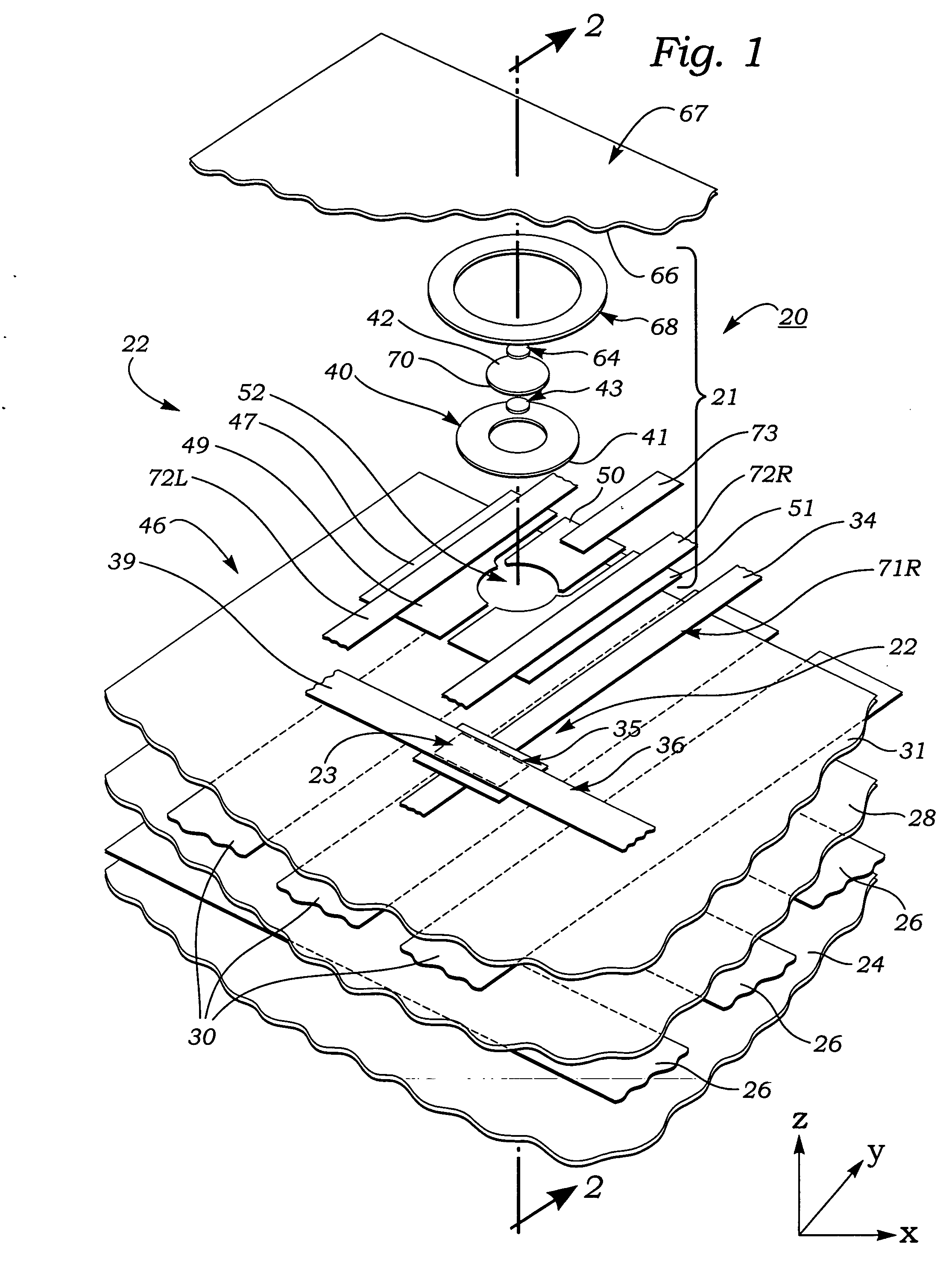Normal force gradient/shear force sensors and method of measuring internal biological tissue stress
a biological tissue and gradient technology, applied in the field of force sensing transducers, sensor arrays and apparatuses, can solve the problems of large internal tissue damage, high pressure alone is generally not sufficient to deleteriously affect tissue damage, and achieves small size and easy conformability
- Summary
- Abstract
- Description
- Claims
- Application Information
AI Technical Summary
Benefits of technology
Problems solved by technology
Method used
Image
Examples
Embodiment Construction
[0056]FIGS. 1-15 illustrate various aspects of individual normal force gradient / shear force sensors and sensor arrays according to the present invention.
[0057] Referring first to FIGS. 1 and 2, those figures illustrate a normal force gradient / shear force sensor unit 20 consisting of a single shear force sensor 21, a plurality of associated peripheral normal force sensors 22, and a single central normal sensor 23 located below and vertically aligned with the shear sensor. As shown in FIG. 1, sensor unit 20 is comprised of a plurality of generally planar elements arrayed in parallel planes which, for convenience are defined as being parallel to an X-Y coordinate plane, and stacked in a vertical, Z direction. Thus, as shown in FIG. 1, sensor unit 20 includes a base, bottom or lower cover sheet 24 made of a thin flexible, stretchable sheet of an electrically non-conductive material. In an example embodiment of sensor unit 20, base sheet 24 was made of polyurethane having 2 a thickness ...
PUM
| Property | Measurement | Unit |
|---|---|---|
| diameter | aaaaa | aaaaa |
| thickness | aaaaa | aaaaa |
| specific gravity | aaaaa | aaaaa |
Abstract
Description
Claims
Application Information
 Login to View More
Login to View More - R&D
- Intellectual Property
- Life Sciences
- Materials
- Tech Scout
- Unparalleled Data Quality
- Higher Quality Content
- 60% Fewer Hallucinations
Browse by: Latest US Patents, China's latest patents, Technical Efficacy Thesaurus, Application Domain, Technology Topic, Popular Technical Reports.
© 2025 PatSnap. All rights reserved.Legal|Privacy policy|Modern Slavery Act Transparency Statement|Sitemap|About US| Contact US: help@patsnap.com



